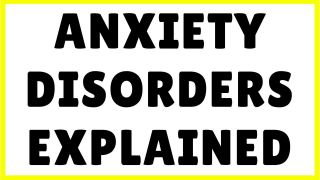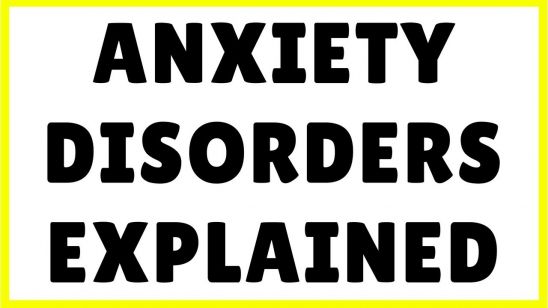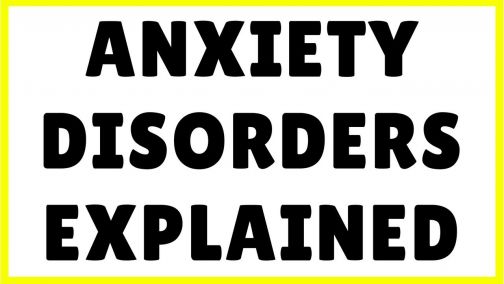Panic Disorder
What is it?
A panic attack is an episode of intense fear that comes on quickly, and causes extreme levels of anxiety. They can happen anywhere and normally last a few minutes. During an attack, a person may struggle to breathe, talk and be around others. They might even think that they’re having a heart attack or dying.
It’s not uncommon to have a few panic attacks over the course of your life. However, some people experience them on an ongoing basis. They develop an intense fear of these attacks, and go to great lengths to avoid triggering them. This is a condition on the anxiety spectrum known as panic disorder. It affects roughly 3% of U.S. adults and it is more common in women than men.
What are the symptoms?
The key symptom of panic disorder is recurring panic attacks. They can strike at any time — at work, at home, at the grocery store, at a bar. The secondary symptom is avoidance. People with panic disorder become afraid of when their next attack will strike. This fear leads them to avoid places, people and scenarios that might act as a trigger. For instance, someone who gets panic attacks while driving might stop driving altogether.
The symptoms of a panic attack are:
- An intense sense of impending doom
- Feeling helpless or out of control
- A fear of dying or having a heart attack
- Tunnel vision
- Rapid heartbeat
- Sweating
- Nausea
- Muscle tightness
- Short or gasping breaths
- Chills or hot flashes
- Tremors
- Abdominal cramping
- Chest pain
- Lightheadedness
- Numbness or tingling sensations
- Feeling detached from reality (i.e. dissociating)
What are some common warning signs?
Panic disorder is characterized by recurrent panic attacks and high levels of anxiety. Panic attacks can occur without warning or in response to a stressor. Because of this, a loved one with the condition might display noticeable changes in their appearance and behavior. They might seem agitated and on edge in certain settings. They might stop doing things that they used to enjoy. You might even witness a panic attack or the beginnings of one while with them.
But sometimes, symptoms are less obvious. People battling chronic mental health conditions can learn to hide their pain from others. It’s possible to appear outwardly fine, while facing mental difficulties in secrecy. It’s important to remember that mental health conditions are invisible illnesses. Just because some people exhibit outward symptoms, doesn’t mean everyone will.
If you think a person in your life might have panic disorder, pay close attention to how they’re doing in the different facets of their life. Are they avoiding specific scenarios more? Have they developed new or strange phobias? Are they struggling to do well at work or school? Has socializing become more difficult? If so, they might be struggling with an anxiety disorder and you should find time to talk to them about their symptoms.
What causes Panic Disorder?
The exact cause of panic disorder is unknown. Doctors believe a range of factors play a role in its development, including:
Genetics
Certain people are more likely to develop panic disorder and other anxiety conditions if they have a family history of them.
Brain circuits/chemistry
Anxiety disorders have been linked to activity in an area of the brain called the Amygdala. The Amygdala is home to our Fight-or-Flight response. It’s thought that people on the anxiety disorder spectrum may have overactive or malfunctioning Amygdalas. You can learn more about that here. There may be other issues at play as well, such as misfiring stress hormones (like cortisol and adrenaline) or dysfunctional serotonin systems. These problems are all part of the Hypothalamic Pituitary Adrenal (HPA) Axis — a complex system of interactions that take place between the hypothalamus, pituitary gland and adrenal glands.
Trauma
Traumatic experiences are thought to impact the likelihood of developing anxiety disorders later in life. For example, someone who grew up in a turbulent home may be more anxious than someone who grew up in a supportive one.
Environmental
Being in high stress environments for extended periods of time can trigger anxiety disorders.
How is it treated?
There are two primary treatment methods for panic disorder — psychotherapy and medication. Lifestyle changes, such as limiting caffeine intake, exercising regularly, getting enough sleep, and maintaining a mindfulness regimen (like yoga or meditation classes) can ease the severity of symptoms. However, for the majority of people, these adjustments are not enough to fully address their disorder.
The most popular psychotherapy for treating panic disorder is called Cognitive Behavioral Therapy (CBT). CBT is a therapeutic model that challenges negative thinking patterns and behaviors. It’s rooted in the idea that our attitudes greatly impact how we think and behave. In CBT, a therapist will help you replace negative thinking patterns and behaviors with more positive ones, in order to better manage worry and fear.
SSRIs, or selective serotonin reuptake inhibitors, are a form of antidepressant medication used to treat depression and anxiety. They work by enhancing the brain’s natural serotonin activity in hopes of increasing levels of happiness and pleasure. Well known examples include Lexapro, Prozac, Paxil and Zoloft. Another popular antidepressant used to treat Panic Disorder are drugs called serotonin-norepinephrine reuptake inhibitors (SNRIs).
An alternative to antidepressants are anti-anxiety medications known as Benzodiazepines. These are normally used to provide short-term anxiety relief, and are not recommended for individuals who struggle with substance abuse problems. Pills known as beta-blockers may also be prescribed to minimize symptoms of a panic attack, such as rapid heartbeat. They are not considered a long-term solution.
It’s important to remember that treatment plans are personalized. If you’re seeking help, make sure you work one-on-one with a doctor to create a plan that fits your needs. Just because a medication or therapy helps someone else recover, doesn’t mean it’ll be the right solution for you. Don’t ever feel guilty about asking for help, taking meds or going to therapy. Addressing your mental health is a productive and courageous thing to do.
How can I help a loved one with Panic Disorder?
It can be hard to know how to react when someone you love isn’t doing well. Do they want to talk about it, or would they prefer to keep their experiences private? Will you push them away by starting the conversation?
There are no easy answers to these questions. Every person handles their mental health differently. That said, we all want to feel loved and supported. Showing someone that you’re invested in their wellbeing can make a world of difference. Here are some ways to do so:
Educate yourself
Read up on symptoms, treatment options, and healthy living recommendations. Try and understand what your loved one is going through so you are better equipped to talk to them about it. This will also make you a valuable resource when it comes time to find treatment.
Encourage healthy living
Sleeping well, eating nutritional foods, staying active and limiting caffeine use can be game changers for someone with anxiety. If they’re surrounded by people who promote this kind of lifestyle, they’re more likely to form healthy habits of their own. Try joining a fitness class together, or cooking meals at home using healthy ingredients.
Advocate treatment
Asking for help can be hard. Societal stigma often keeps people from opening up to others about their symptoms. Support your loved one by helping them research different treatment methods, or doctors in their area. If they’d like, go to a few sessions with them. Remind them that there’s nothing weird about getting help, and that you’re proud of them for following through.
Listen
It’s common for people battling anxiety to feel alone, and like they don’t have anyone to talk to. Make time for meaningful conversations. Ask them how they’re doing. Let them talk and don’t discount their emotions. It is not your job to fix them, just to be there.
Accompany them
If certain settings are triggering, offer to go with them or stay by their side. Reassure them that everything will be alright. Stay calm even if their anxiety levels rise.
Don’t tell them to calm down
People with anxiety are often told to “get over it”, “worry less” or “chill out.” These statements downplay the emotions they’re feeling, and won’t help lessen their symptoms. Let them vent without judging.
Be patient
Don’t take it personally if they lash out at you, don’t answer text messages or socialize less. They are battling something that’s very hard to overcome. Their distance has nothing to do with who you are as a person. Keep showing up for them even when it feels like it’s not helping. The act alone lets them know that they have people in their life who care.
What other resources are out there?
Want to learn more, find a doctor, join a support group or speak to a counselor? The below resources might be able to help:
- ADAA Screening
- Crisis Text Line
- BetterHelp
- Psychology Today Directory
- American Psychiatric Association
- Medicaid Eligibility Information
- Open Path Collective
- Resources for POC, LGBTQ+ and disabled individuals
- Anxiety and Depression Association of America
- National Network of Depression Centers
- Medicine Assistance Tool
- NeedyMeds
- Erika's Lighthouse
- Anxiety Network
- Anxiety Central Forums
- Social Anxiety Institute
Support our work
We’re on a mission to change how the world perceives mental health.








































